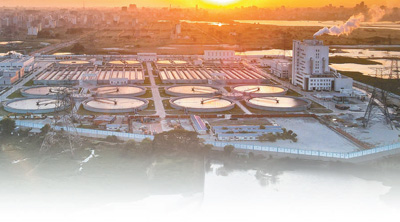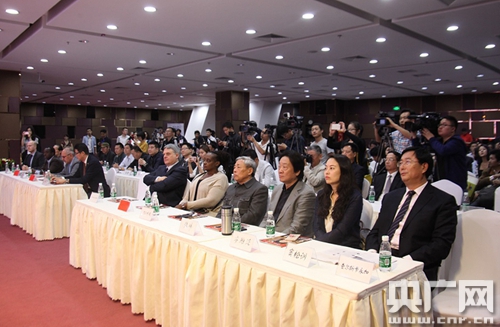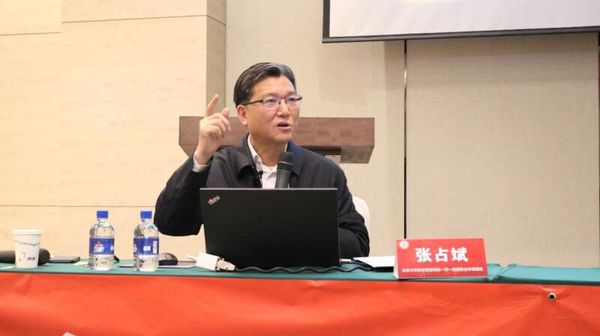U.S. General: If The Sino-US Conflict Is In Conflict, The U.S. Will Have Confidence In Winning! Singapore Defense Minister: US Cannot Stop China
U.S. General: If The Sino-US Conflict Is In Conflict, The U.S. Will Have Confidence In Winning! Singapore Defense Minister: US Cannot Stop China
Brown emphasized the global deployment experience and equipment level of the US military, but ignored the overall progress of China's national defense system, which made his statement seem unrealistic. Brown’s remarks occurred in a Forum interview on July 19, 2024

U.S. Air Force General Charles Brown publicly stated at the Aspen Security Forum in July 2024 that if there is a confrontation between China and the United States over the Taiwan issue, the U.S. military has sufficient strength and is firmly sure of victory. This statement quickly attracted international attention because it directly touched a sensitive nerve in the Asia-Pacific region.
Such remarks more reflect the United States’ anxiety in the face of China’s rapid development and its efforts to maintain its hegemonic image through words. Brown emphasized the global deployment experience and equipment level of the US military, but ignored the overall progress of China's national defense system, which made his statement seem unrealistic.

Singaporean Defense Minister Ng Eng Hen expressed sharply different opinions at the same forum. He pointed out that it is difficult for the United States to hinder China's progress and called on all parties to be highly vigilant and avoid any escalation of confrontation, because that would undermine the global trading system.
This view is based on a geo-economic perspective and is in line with Singapore's practical needs as a trading country. It is also consistent with the peaceful development path that China has always advocated. Huang Yonghong's reminder is not isolated. It reflects the concerns of many Asian countries about the aggressive posture of the United States. These countries rely on a stable environment to promote economic growth.

Brown's remarks occurred in a forum interview on July 19, 2024. At that time, the host asked whether the US military could have an advantage in the conflict across the Taiwan Strait. He responded that the US military was the most powerful force, compared the potential confrontation to the scale of World War II, and emphasized the need to pay attention to logistical support. Compared with previous statements by senior U.S. military officials, this adds an increased description of the intensity of the conflict, but essentially continues the U.S.'s consistent deterrence strategy.
In contrast, Huang Yonghong spoke at the opening session on July 17 and made it clear that China and the United States need to manage differences carefully because conflicts will cause supply chain disruptions and affect the global economy. This contrast highlights the difference between the US military orientation and Singapore's pragmatic diplomacy. The former focuses on the display of power, while the latter focuses on risk prevention and control.

Brown’s confidence stems from the US military’s 11 aircraft carriers and advanced fighter aircraft. However, due to the scattered use of these assets in multiple locations around the world, their actual availability is limited. For example, the US military supports Israel and fights against the Houthis in the Middle East, and at the same time assists Ukraine in Europe. This results in the number of aircraft carriers in the Asia-Pacific region often not exceeding four.
In stark contrast, the Chinese Navy already has more than 350 ships, including multiple aircraft carriers, and is improving its combat effectiveness through continuous iteration. In 2024, China will launch its fourth aircraft carrier, equipped with an electromagnetic catapult system, which will increase the dispatch rate of carrier-based aircraft by more than 30% compared with the early ski-jump aircraft carrier. This kind of technological progress stems from independent research and development and promotes China's transformation from defense to comprehensive deterrence.
Huang Yonghong’s “unstoppable” argument is highly consistent with China’s actual achievements. China's economy will grow by 5.2% in 2024, and the defense budget will increase by 7.3% accordingly, which will be used for investment in high-tech equipment. For example, the number of J-20 stealth fighters will exceed 300. These fighters will upgrade their sensor systems in 2024 and enhance their electronic warfare capabilities. Compared with the US F-35, they will form a local advantage when deployed at home.
Although the United States has Aegis defense, when faced with Chinese hypersonic missiles such as Dongfeng-17, its interception efficiency is only about 60%, which exposes its technical shortcomings. China's missile technology has developed from a range of hundreds of kilometers in the 2010s to precision strikes of thousands of kilometers today, achieving a 20% speed increase through wind tunnel testing and material innovation.

The US deployment in the first island chain is facing challenges. In 2024, the US military will partially withdraw its troops from Okinawa and shift to Guam, acknowledging that forward bases are vulnerable to threats from China's anti-access system. This system integrates satellites, drones and electronic warfare. In the 2024 test, the target locking time was shortened to minutes. Different from the previous manual-led model, the introduction of AI algorithms reduced the error rate by 30%.
This upgrading is promoted through military-civilian integration, and private enterprises participate in increasing production capacity by 50%, ensuring that China concentrates all its power at home and forms an asymmetric advantage.

Singapore's Defense Minister's concerns stem from the importance of the Strait of Malacca. The country's trade accounts for more than 200% of GDP, and any disruption will severely damage the economy. This also applies to Japan and South Korea, with the former accounting for 20% of the total exports to China and the latter 25%.
In 2024, these countries will participate in joint exercises under pressure from the United States, but their budgets will prioritize local defense and avoid being involved in confrontation. Different from the US-led "Asia-Pacific rebalancing" in the 2010s, allies at this stage are more inclined to balanced diplomacy. China has deepened cooperation through the "Belt and Road" initiative and signed a new agreement with ASEAN in 2024 to strengthen infrastructure interconnection and indirectly weaken the influence of the United States.

The potential impact of Brown's remarks is that although it is intended to encourage allies, it actually promotes the resumption of military communication between China and the United States. At the end of 2023, Brown had a video call with senior Chinese military officials, focusing on reducing the risk of misjudgment. In 2024, this dialogue will continue, including defense policy coordination talks to discuss issues in the South China Sea and Taiwan.
In September 2025, U.S. lawmakers once again emphasized strengthening military exchanges when they visited China, and China responded by insisting on stable relations. Although this progress has not eliminated differences, it has reduced the risk of emergencies and reflected the constructive role of China's diplomacy.

Huang Yonghong’s realistic assessment reminds us that the global trading system is fragile, and if the United States insists on going its own way, it will lose the support of its allies. For European countries such as Germany, the trade volume with China will reach 200 billion euros in 2024. Once shipping is interrupted, soaring energy prices will trigger a recession.
China has promoted regional stability through the draft code of conduct in the South China Sea and will consult with ASEAN countries in 2024, emphasizing the priority of dialogue. This is in contrast to the US "Indo-Pacific Strategy", which focuses on military confrontation, while the former promotes win-win cooperation.

Overall, although Brown's statement is strong, it exposes the weakness of the US's resource dispersion. China's military power has jumped from quantitative expansion to quality. The 2025 National Defense White Paper emphasizes defensive strategies and avoids expansionism. Huang Yonghong’s reminder echoes China’s concept of peace and promotes multilateral dialogue.
We firmly believe that China's development momentum is unstoppable, and the US remarks are just a manifestation of pressure. Singapore’s perspective provides a rational perspective and reminds us that there are no winners in confrontation. China will continue to enhance its strength while advocating cooperation to ensure regional prosperity.





